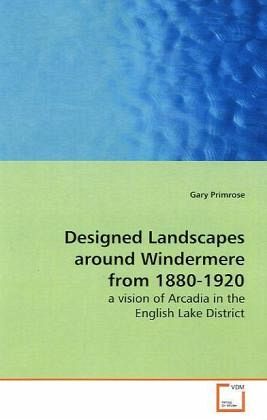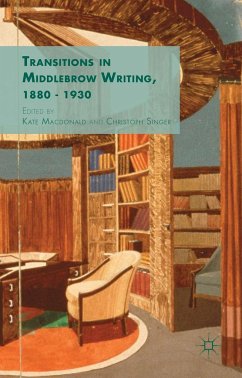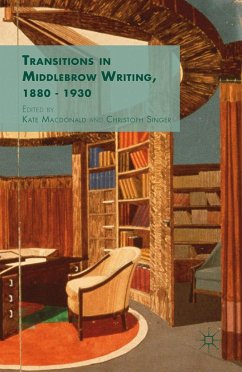
Designed Landscapes around Windermere from 1880-1920
a vision of Arcadia in the English Lake District
Versandkostenfrei!
Versandfertig in 6-10 Tagen
32,99 €
inkl. MwSt.

PAYBACK Punkte
16 °P sammeln!
The landscape around Windermere and Bowness in theheart of the English Lake District continues to charmand attract holidaymakers from around the world. Easylake access, forest walks, open fields with stunningviews to distant fells, and town amenities withineasy reach, all combine to make the area attractiveto tourists and residents alike. How did such anaesthetically pleasing landscape evolve? Was itdesigned or mere chance? If it was designed what werethe ideas behind it? How were the public able to gainaccess to private land with such a pleasing varietyof landscapes? These questions were the ...
The landscape around Windermere and Bowness in the
heart of the English Lake District continues to charm
and attract holidaymakers from around the world. Easy
lake access, forest walks, open fields with stunning
views to distant fells, and town amenities within
easy reach, all combine to make the area attractive
to tourists and residents alike. How did such an
aesthetically pleasing landscape evolve? Was it
designed or mere chance? If it was designed what were
the ideas behind it? How were the public able to gain
access to private land with such a pleasing variety
of landscapes? These questions were the starting
points for an investigation into the exceptional
landscape around Windermere that we
enjoy today. Three case studies were chosen from
different types of designed landscapes: Blackwell,
the Arts and Crafts house and garden south of Bowness
for villa landscapes; Queen Adelaide's
Hill for amenity landscapes, preserved from
development by the newly-fledged National Trust; and
Claife Woods, a commercial woodland and also one of
the first examples of multiple-use forestry in the
country.
heart of the English Lake District continues to charm
and attract holidaymakers from around the world. Easy
lake access, forest walks, open fields with stunning
views to distant fells, and town amenities within
easy reach, all combine to make the area attractive
to tourists and residents alike. How did such an
aesthetically pleasing landscape evolve? Was it
designed or mere chance? If it was designed what were
the ideas behind it? How were the public able to gain
access to private land with such a pleasing variety
of landscapes? These questions were the starting
points for an investigation into the exceptional
landscape around Windermere that we
enjoy today. Three case studies were chosen from
different types of designed landscapes: Blackwell,
the Arts and Crafts house and garden south of Bowness
for villa landscapes; Queen Adelaide's
Hill for amenity landscapes, preserved from
development by the newly-fledged National Trust; and
Claife Woods, a commercial woodland and also one of
the first examples of multiple-use forestry in the
country.




![The Lewes House Collection of Ancient Gems [now at the Museum of Fine Arts, Boston] by J.D. Beazley, Student of Christ Church, 1920 Cover The Lewes House Collection of Ancient Gems [now at the Museum of Fine Arts, Boston] by J.D. Beazley, Student of Christ Church, 1920](https://bilder.buecher.de/produkte/48/48995/48995188n.jpg)







